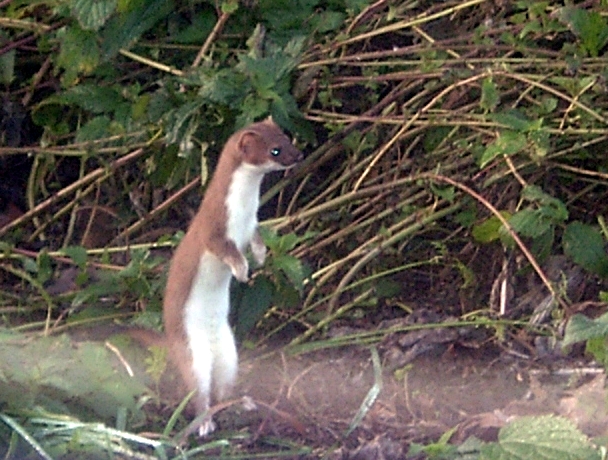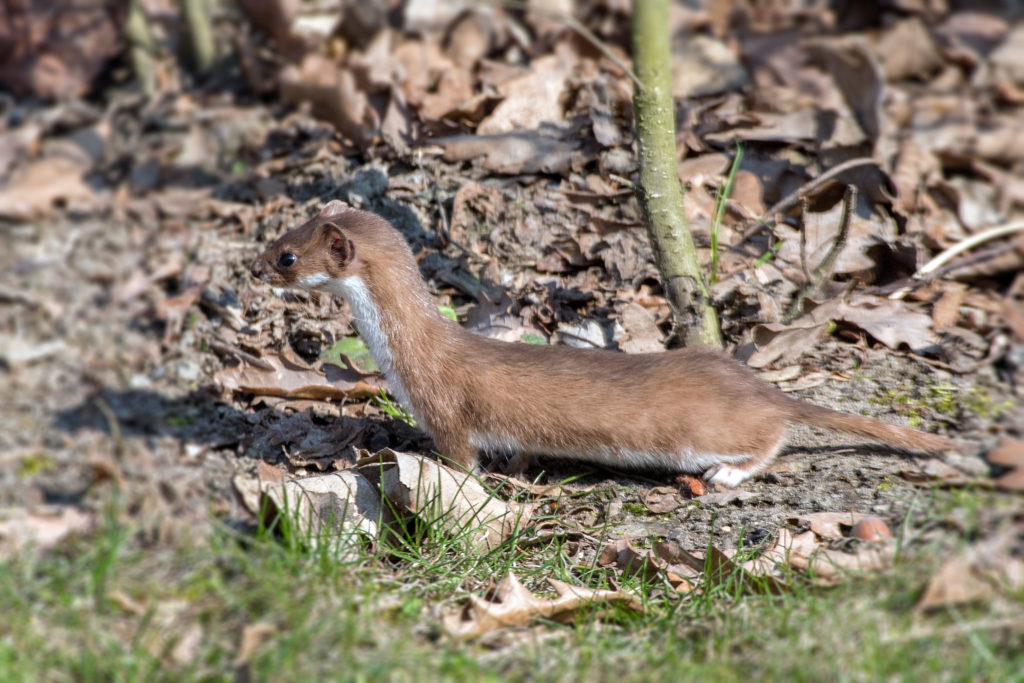You don’t hear so much about weasels. Their New Zealand distribution is patchy and their bigger mustelid relatives tend to dominate the mammal predator stories. But when there was a mast year in 2014, weasels as well as stoats turned up in the beech forests of Nelson’s Maruia Valley to feast on the bonanza of available rodents.
Darrell Haworth shares some of the surprising things DOC scientists learned about weasels from that outbreak in the latest DOC Research and Development series publication (No. 355) just released.

“The Maruia Valley in the South Island of New Zealand experienced a major beech mast event in autumn 2014, which resulted in a rodent irruption and subsequent increases in mustelid populations. Interestingly, this included weasels (Mustela nivalis), which were caught at an unprecedented rate. Therefore, this study investigated the dynamics of this weasel population and its interactions with other key predator species in this valley.”
The fact that weasels were present in numbers was the first surprise for the scientists.
“The stoat is the most common predator in New Zealand forests and so much is already understood about its population dynamics and biology. By contrast, little information is currently available on weasels because they are usually far less common than stoats making them difficult to study, and are considered less of a threat than other predator species that occur in forests.”
Rats and mice are rapid breeders, so initially their populations erupt quickly in response to a beech mast event. Slower breeding mustelids take a bit longer to respond to the sudden abundance of rodent meat on the forest table.
“The first weasel was caught almost 2 months after the mouse abundance increased, reflecting the slower reproductive cycle of predators.”

The next surprising finding was that stoats and weasels (which are preyed on by stoats) were occupying the same locations during the mast event.
“There was some evidence of niche differentiation between weasels and stoats (M. erminea) in grassland habitats in the valley. However, twin catches indicated that these species also coexisted in similar ecosystems, with a likely crossover in home range, defying the previous belief that weasels avoid stoat-scented areas. Both weasels and stoats thrived and seemingly were able to coexist for small periods of time due to the high rodent abundance providing a large and valuable food resource.”
Perhaps fat rats are easier than wily weasels for stoats to catch. Or maybe the rampant mouse population made it worth taking a few risks for the weasels who sneaked into stoat territory. Either way, it shows that stoats aren’t the only mustelids that conservationists need to watch out for during mast events. Smaller weasels may also need to be trapped – and stoat traps won’t necessarily do the job.
“Testing of the trigger weights of DOC 200 traps showed that a percentage of weasels, particularly females, would avoid capture even if they encountered and entered a trap. Therefore, it is imperative that increased monitoring and trapping of weasels is undertaken in beech forests to help protect valuable native species.”
The reason females tend to escape traps is that female weasels are significantly smaller than males.
“Sexual dimorphism is pronounced in this species, with females weighing 35–90 g and males weighing 72–185 g. Females also have a smaller overall body length than males with averages of 182 mm and 217 mm respectively, giving females a greater hunting efficiency, which is critical when rearing young.”
Weasels are voracious eaters of mice. Their body shape means that they have to eat often in order to generate enough energy to survive.

“The elongate body and short legs result in weasels having high locomotive energy costs but may represent a compromise between energy conservation and predation efficiency. Consequently, weasels need to find five to ten small meals each day to meet their energy requirements, storing any excess nutrition as muscle rather than fat because the latter would compromise their ability to quickly enter and move through tunnels.”
Having such high food needs may mean that weasels hunt during both day and night.
“There is much debate in the literature about the activity patterns of weasels, with some stating that they are diurnal and others that they are nocturnal. King & Powell (2007) suggested that because of their high food requirements, weasels will hunt when hungry, be it day or night.”
So what are the control options and issues for weasels?
“Because weasels are not considered a great threat to wildlife in New Zealand and are typically present at a low abundance, their control has not received the level of attention afforded to stoats and other pest animal species. Consequently, weasels are currently caught in kill traps such as the DOC 150 or the DOC 200 set in wooden tunnels, which have been designed to target rats, stoats and hedgehogs. The factory trigger weight for both of these traps is reported as 80 g, meaning that female weasels at the bottom end of the size range would not trigger them. This, alongside the fact that males may have a larger home range, increasing the likelihood that they will encounter traps, likely explains why 75% of weasels that are caught in kill traps are male.”
Trapping is not sufficient to eliminate weasels on a landscape scale.
“A trapping network will only be successful at a localised scale and is very labour-intensive, with the necessary level of labour depending on the infrastructure layout that is chosen, i.e. landscape or grid depending on the scale of the programme and the species being protected.”
“In terms of toxins, both anticoagulants and 1080 are just as likely to kill weasels as by-kill, with surviving weasels responding quicker afterward than stoats through their ability to breed before stoats. The use of anticoagulants however is heavily restricted on public conservation land and new toxins such as para-aminopropiophenone (PAPP) are not yet recognised or registered as a control option for weasels, only stoats and feral cats. Therefore, the use of trapping networks is currently the best option for controlling weasels in public conservation lands.”
Interestingly, while 1080 knocks back rat numbers, it apparently doesn’t control mice. It may, in fact, have contributed to the initial presence of weasels.
“It is apparent that the aerial 1080 application in October had no impact on mice, supporting the assertions of Fisher & Airey (2009) that mice can detect 1080 even when masked. As a result, mice increased to atypical abundances in the forest, providing the driver for a weasel incursion.”
While much was learned about weasels in the Maruia study, they are still the most mysterious of our mustelid predators.
“Although this research provided evidence that helps to answer some questions, it leaves many more unanswered. Therefore, to close these knowledge gaps and give pest management practitioners further insight into weasel dynamics, additional research efforts are required in several areas. A better understanding of pest dynamics in beech forests is critical to slowing the loss of native species and improving our tenuous grip on the continued existence of at-risk species.”
The full DOC publication is freely available online.
Weasel (Mustela nivalis) dynamics in South Island beech forests of the Maruia Valley (2018)

